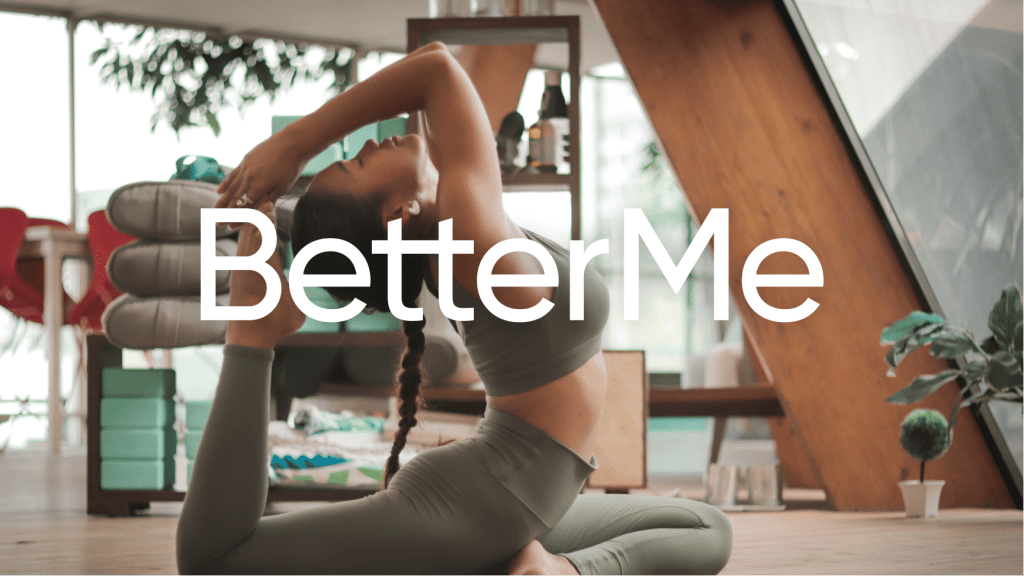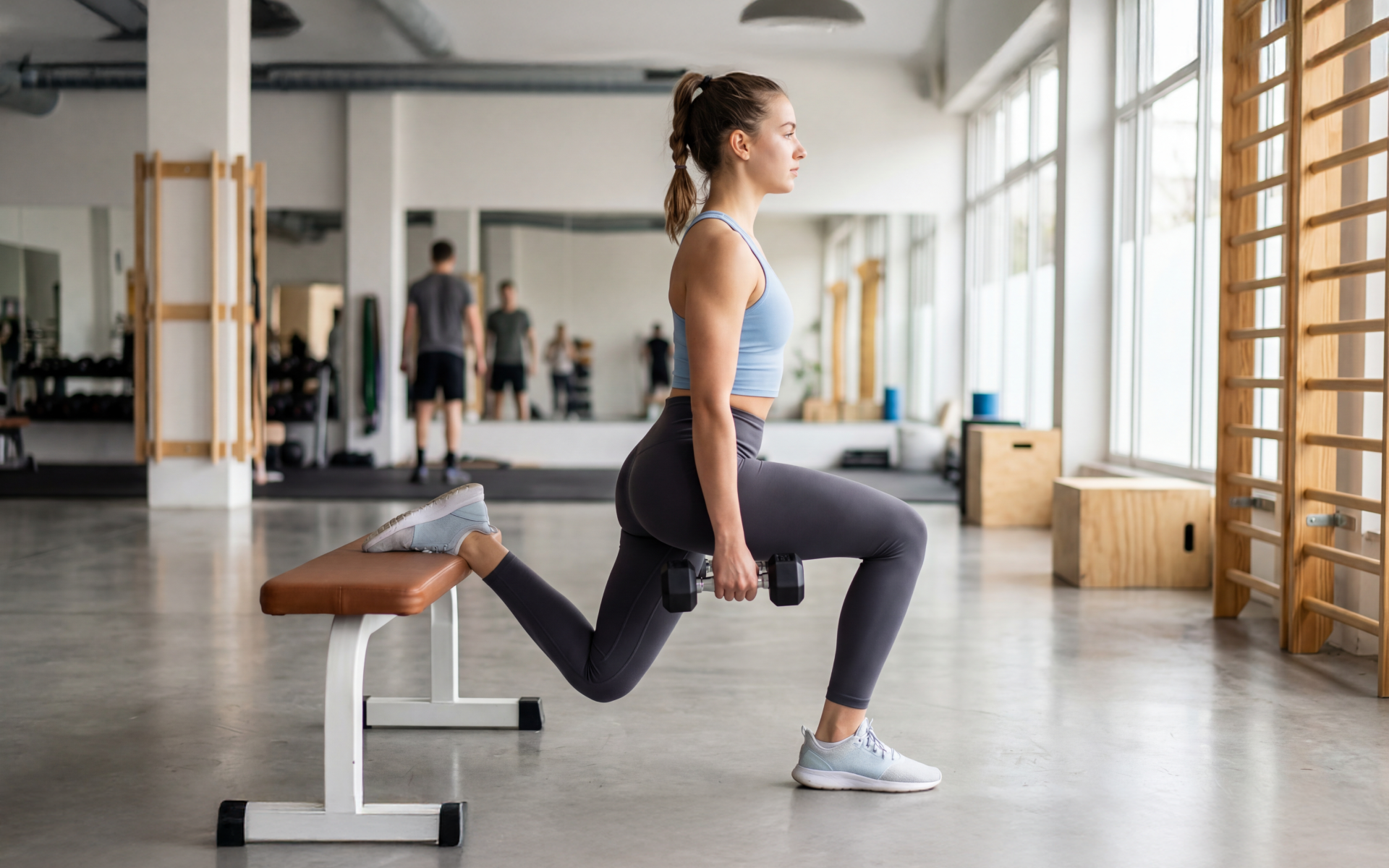Stretching is an essential component of any fitness routine, offering numerous benefits such as increased flexibility, improved posture, and reduced risk of injury. It’s no wonder that fitness experts and enthusiasts alike recommend incorporating stretching exercises into your daily life. But does stretching actually burn calories? In this blog post, we’ll dive into the science behind stretching and its potential calorie-burning effects. Along the way, we’ll provide practical tips and guidance to help you make informed decisions about incorporating stretching into your fitness regimen for optimal results. Let’s get the download started 🙂
Get your personalized
meal plan!
What Is Stretching?
Stretching is the process of elongating and extending muscles, tendons, and other connective tissues in order to increase flexibility, range of motion, and overall physical comfort.
This involves applying gentle pressure to the body’s various muscle groups, allowing them to lengthen and relax. Stretching can be performed multiple ways and is often incorporated into warm-up and cool-down routines for various physical activities.
Mechanics Of Stretching
When you stretch, your muscles and connective tissues are gradually lengthened through a controlled movement or position. This process helps increase the elasticity of the muscle fibers, allowing them to be more pliable and adaptable to movement.
The result – enhanced muscle ability to contract and generate force.
Types Of Stretching
There are several different types of stretching techniques that cater to various goals and personal preferences. Some of the most common types include:
Static Stretching
This involves holding a stretch for an extended period, typically between 15 and 60 seconds, without any movement. Static stretching is often used during cool-downs after exercise to help reduce muscle soreness and improve overall flexibility (3).
Dynamic Stretching
Unlike static stretching, dynamic stretching involves moving through a range of motion, gently stretching the muscles and joints without holding the position. This type of stretching is commonly used as part of a warm-up routine, preparing the body for physical activity (3).
Read More: A Guide To Stretches For Squats To Increase Flexibility And Mobility
Ballistic Stretching
This type of stretching uses bouncing or rapid movements to push the muscles and joints beyond their normal range of motion. Ballistic stretching is generally not recommended for most people, as it can increase the risk of injury if not performed correctly (3).
Proprioceptive Neuromuscular Facilitation (PNF) Stretching
PNF stretching is an advanced technique that involves contracting and relaxing the target muscle group before stretching it. This method is typically performed with the assistance of a partner or a trainer and can lead to significant improvements in flexibility (3).
Passive Stretching
Passive stretching involves the use of an external force, such as a strap, a partner, or gravity, to help move the muscle into a stretched position. This type of stretching allows for a deeper stretch, but should be performed with caution to avoid overstretching or injury (3).
Does Stretching Burn Calories?
Yes, stretching does burn calories, but the amount is relatively small compared to other forms of exercise.
Calories are a unit of energy, and our bodies require energy to perform various functions, such as breathing, digestion, and physical activity.
The primary source of this energy is the food we consume, which gets converted into calories that fuel these processes. When you engage in any activity, your body uses calories to produce the energy needed to execute the movement or action.
There are three main factors that determine the number of calories burned during an activity:
Intensity
The more intense the activity, the more calories you burn. High-intensity exercises like running, swimming or cycling require more energy and therefore burn more calories than low-intensity activities like walking or stretching (7).
If you’ve mustered up the courage to crush your weight loss goal, let Betterme take the sting out of this demanding process. Our app will help you restructure your habits, remold your life and crank up your fitness results!
Duration
The longer the activity, the more calories you burn. Engaging in an exercise for an extended period will result in a higher calorie expenditure than performing the same activity for a shorter duration.
Body Composition
Your body composition, including factors like muscle mass, body fat percentage, and overall weight, also affects the number of calories you burn during an activity (2).
Individuals with a higher muscle mass and lower body fat percentage tend to burn more calories than those with less muscle and more body fat.
When it comes to stretching, the intensity is generally low compared to other forms of exercise.
Stretching primarily involves slow, controlled movements that focus on lengthening and relaxing the muscles. These movements do not require a significant amount of energy, which means the calorie burn during stretching will be relatively low.
The duration of a typical stretching session is also relatively short, usually lasting between 5 and 30 minutes. This further contributes to the minimal calorie expenditure during stretching.
Moreover, stretching does not significantly challenge or engage the large muscle groups that contribute to a higher calorie burn, like those used during strength training or aerobic exercises.
That said, stretching still burns calories because it requires energy for your muscles to perform the movements. The exact number of calories burned during stretching depends on factors like your body composition, the specific type of stretching you’re doing, and the duration of your session.
On average, a person weighing 150 pounds (68 kg) may burn approximately 90-120 calories during a 30-minute stretching session.
While stretching may not be the most effective way to burn calories or lose weight, it is an important component of a well-rounded fitness routine. It has numerous benefits, such as increased flexibility, reduced risk of injury, and improved mental well-being (8).
It’s essential to combine stretching with other forms of exercise, such as cardio and strength training, to achieve optimal health and fitness results.
What Does Stretching Do?
Stretching is an important part of any fitness routine, as it offers numerous benefits. These include:
Increases Flexibility And Range Of Motion
Stretching helps increase your flexibility and range of motion, which is essential for maintaining good posture, preventing injury, and allowing your muscles to work more effectively (3).
When you stretch regularly, your muscles become more pliable, making it easier to move through a full range of motion without straining or tearing the muscle fibers.
Improved flexibility can also enhance your athletic performance by allowing your muscles to generate more force and power. This is because flexible muscles are better able to lengthen and contract, which increases the efficiency of movement and reduces the risk of injury during physical activity (3).
By incorporating stretching into your daily routine, you can maintain or improve your flexibility, ultimately leading to better overall physical health.
Improves Blood Circulation
Stretching helps improve blood circulation by increasing blood flow to your muscles, which in turn delivers more oxygen and nutrients to them (6).
Improved circulation not only aids in muscle recovery after exercise but also helps reduce the risk of developing muscle soreness and stiffness.
Better blood circulation also has broader health implications, such as promoting cell growth, organ function, and reducing the risk of cardiovascular disease (5). Regular stretching can help maintain good circulation throughout your body, contributing to overall well-being.
Reduces Stress And Promotes Relaxation
Stretching can help alleviate stress by promoting relaxation and releasing tension in your muscles (1).
When you’re stressed, your muscles tend to tighten up, which can lead to discomfort and even pain. By stretching and elongating these tight muscles, you can relieve this tension and help your body feel more relaxed.
In addition, stretching stimulates the production of endorphins – the body’s natural “feel-good” chemicals – which can help improve your mood and promote a sense of well-being (4).
Incorporating regular stretching into your daily routine can be an effective way to manage stress and improve your mental health (1).
Enhances Muscular Coordination And Balance
Regular stretching can help improve your muscular coordination and balance by increasing the communication between your muscles and your brain (3).
This improved neuromuscular coordination allows your muscles to work together more effectively and efficiently, which can lead to better overall body control and stability (3). Improved balance is particularly important as we age, helping prevent falls and injuries.
By incorporating stretching exercises into your routine that target various muscle groups and challenge your balance, you can maintain or even improve your coordination and stability over time.
Reasons why BetterMe is a safe bet: a wide range of calorie-blasting workouts, finger-licking recipes, 24/7 support, challenges that’ll keep you on your best game, and that just scratches the surface! Start using our app and watch the magic happen.
Prevents Injury
One of the main benefits of stretching is its ability to help prevent injury (1). When your muscles are tight and inflexible, they are more susceptible to strains and tears during physical activity.
Regular stretching helps lengthen and loosen your muscles, making them more resilient and less prone to injury.
In addition, stretching often improves your body’s alignment and posture, which can further reduce the risk of injury.
By maintaining proper alignment, you can minimize stress on your joints and muscles, decreasing the likelihood of developing chronic pain or injuries related to poor posture or muscle imbalances.
Improves Athletic Performance
Incorporating stretching into your fitness routine leads to better athletic performance. As mentioned earlier, increased flexibility allows your muscles to generate more force and power.
Additionally, stretching helps improve your overall body mechanics, allowing for smoother, more efficient movements during physical activity.
By regularly stretching, you may increase your agility, speed, and strength, ultimately enhancing your performance in various sports and physical activities.
It’s important to remember that dynamic stretching is best suited for warming up before exercise, while static stretching is more appropriate for cooling down after a workout.
Enhances Mental Focus And Concentration
Stretching not only benefits your physical health but also has a positive impact on your mental well-being (1). Engaging in regular stretching exercises can improve your mental focus and concentration by increasing blood flow to the brain, which delivers more oxygen and nutrients.
As you stretch, you also become more aware of your body and its movements, fostering a deeper mind-body connection. This increased awareness helps you maintain better concentration and focus during daily tasks or athletic performance.
Alleviates Back Pain
Many people experience back pain at some point in their lives, often due to poor posture, muscle imbalances, or prolonged sitting. Regular stretching can help alleviate this discomfort by targeting the muscles that support your spine and promoting proper alignment (3).
For example, stretching your hamstrings, hip flexors, and lower back muscles may relieve tension in these areas and reduce the strain on your spine.
By incorporating targeted stretches into your routine, you can minimize your risk of developing chronic back pain and improve your overall spinal health.
Supports Healthy Joints And Reduces Joint Pain
Stretching exercises can help support healthy joints and reduce joint pain by maintaining or improving the range of motion around the joint and promoting good circulation. This is particularly important for individuals with arthritis or other joint-related conditions, as limited mobility exacerbates joint pain and stiffness (3).
Regular stretching helps keep the connective tissues surrounding your joints more pliable, which allows for smoother, pain-free movement.
Additionally, maintaining good flexibility in the muscles surrounding a joint distributes the forces acting on the joint more evenly, reducing the risk of injury or wear and tear (3).
Promotes Better Sleep
Stretching may improve your sleep quality by promoting relaxation and reducing muscle tension. As you stretch, your body releases endorphins, which calms your mind and makes it easier to fall asleep.
Stretching before bed can also help alleviate any discomfort or tension that may have built up throughout the day, making it easier to find a comfortable sleeping position.
By incorporating gentle stretches into your evening routine, you create a relaxing bedtime ritual that signals to your body that it’s time to wind down and prepare for sleep. This should lead to a more restful night’s sleep and improved overall well-being.
Frequently Asked Questions
Q: How Many Calories Does Stretching Burn?
A: The number of calories burned during stretching depends on factors like your body composition, the specific type of stretching you’re doing, and the duration of your session.
On average, a person weighing 150 pounds (68 kg) may burn approximately 90-120 calories during a 30-minute stretching session.
Q: Does Yoga Stretching Burn Calories?
A: Yoga, which involves a combination of stretching, strength, and balance exercises, does burn calories. However, the calorie burn varies depending on the intensity and style of the yoga practice.
Gentle yoga styles focusing mainly on stretching may burn fewer calories compared to more dynamic and intense yoga styles like power yoga or vinyasa flow.
Q: How Many Calories Does 10 Minutes Of Stretching Burn?
A: A 10-minute stretching session can burn anywhere from 30-40 calories, depending on factors such as your body weight, the type of stretches performed, and the intensity of the stretching session.
Q: Does Intense Stretching Burn Calories?
A: Intense stretching, which may involve deeper stretches or dynamic movements, can burn slightly more calories than gentle static stretching. However, the calorie burn is still relatively low compared to other high-intensity exercises like running, swimming, or strength training.
Q: Why Does Stretching Burn Calories?
A: Stretching burns calories because it requires energy for your muscles to perform the movements. Although the intensity of stretching is generally low compared to other exercises, your body still uses calories to produce the energy needed to execute the stretches.
Q: What Are Some Examples Of Stretching Exercises And Their Calories Burned?
A: Some stretching exercises and their approximate calories burned in a 30-minute session for a 150-pound individual include:
- Static stretching (gentle): 90 calories
- Dynamic stretching (moderate): 120 calories
- Yoga (varies based on intensity and style): 100-300 calories
Note that these are estimates based on similar activities, as there has not been much specific research into exactly how many calories stretching burns.
Q: Are There Stretches That Burn More Calories Than Others?
A: Stretches that involve multiple muscle groups, require balance or strength, or are performed dynamically may burn slightly more calories than simple static stretches. However, the calorie burn difference between various stretches is generally minimal.
Conclusion
Stretching does burn calories, but the amount is relatively small compared to other forms of exercise.
While it may not be the most effective way to lose weight or significantly increase calorie expenditure, stretching offers numerous benefits such as improved flexibility, reduced risk of injury, and enhanced mental well-being.
To achieve optimal health and fitness results, it’s important to incorporate stretching into a well-rounded exercise routine that also includes cardio and strength training activities.
DISCLAIMER:
This article is intended for general informational purposes only and does not serve to address individual circumstances. It is not a substitute for professional advice or help and should not be relied on for making any kind of decision-making. Any action taken as a direct or indirect result of the information in this article is entirely at your own risk and is your sole responsibility.
BetterMe, its content staff, and its medical advisors accept no responsibility for inaccuracies, errors, misstatements, inconsistencies, or omissions and specifically disclaim any liability, loss or risk, personal, professional or otherwise, which may be incurred as a consequence, directly or indirectly, of the use and/or application of any content.
You should always seek the advice of your physician or other qualified health provider with any questions you may have regarding a medical condition or your specific situation. Never disregard professional medical advice or delay seeking it because of BetterMe content. If you suspect or think you may have a medical emergency, call your doctor.
SOURCES:
- 5 HUGE BENEFITS OF STRETCHING: LEARN THE ADVANTAGES OF FLEXIBILITY (n.d., nasm.org)
- Calorie Estimation in Adults Differing in Body Weight Class and Weight Loss Status (2016, nih.gov)
- CURRENT CONCEPTS IN MUSCLE STRETCHING FOR EXERCISE AND REHABILITATION (2012, nih.gov)
- Endorphins (2022, clevelandclinic.org)
- Prevention of cardiovascular diseases: Role of exercise, dietary interventions, obesity and smoking cessation (2005, nih.gov)
- Regulation of Increased Blood Flow (Hyperemia) to Muscles During Exercise: A Hierarchy of Competing Physiological Needs (2015, nih.gov)
- Role of Physical Activity for Weight Loss and Weight Maintenance (2017, nih.gov)
- Stretching: Focus on flexibility (2022, mayoclinic.org)













